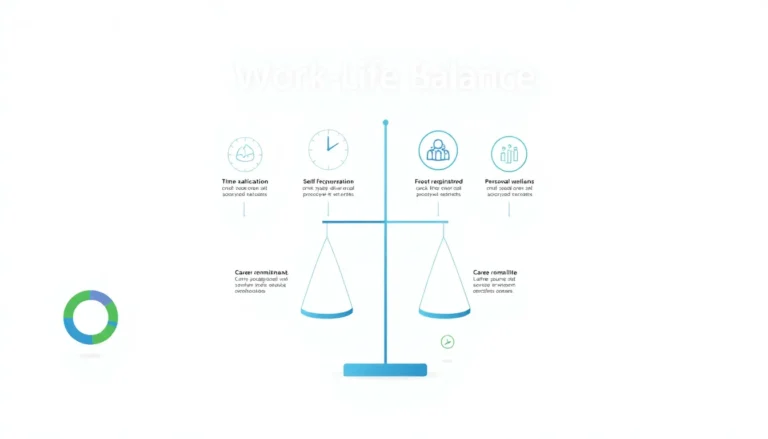Table of Contents
ToggleOrthodontists are superheroes of smiles, but even Batman needed to take a break once in a while, preferably while his briefcase of dental tools is locked away. Finding a work-life balance in this demanding field isn’t just a luxury: it’s essential for their well-being and effectiveness. In this text, we’ll explore the art of juggling patient care, staff management, and personal life, without dropping a single retainer. Prepare to investigate into the challenges orthodontists face daily while uncovering actionable tips they can use to achieve a more satisfying balance.
Understanding the Demands of Orthodontic Practice

Orthodontists have an incredibly demanding career that requires a unique blend of skills and traits. They must not only be experts in dental care and facial aesthetics but also adept at managing a bustling office environment. From consultations to treatment planning and patient follow-ups, the daily tasks can be diverse and time-consuming. Besides, orthodontists often work closely with teams of dental technicians, nurses, and administrative staff, necessitating effective leadership and communication skills.
Plus to technical skills, staying up to date with the latest advancements in orthodontics, such as new technologies and treatment methodologies, is crucial. This commitment to ongoing education can add pressure, as finding time to attend workshops and conferences can feel like another job entirely, right after they finish with their current patients.
Common Challenges Faced by Orthodontists
Like any demanding profession, orthodontists face an array of challenges that can make achieving work-life balance feel nearly impossible. One major hurdle is the unpredictable nature of patient care. Emergencies and unexpected treatment delays can throw off an entire day’s schedule, leading to longer hours in the office.
Also, the emotional toll taken from dealing with anxious children (and their equally anxious parents) can be taxing. There’s a constant need for patience and empathy, making mental exhaustion a very real issue. Many professionals also find themselves feeling guilty when taking time off, fearing that missed appointments can impact patient outcomes and their own professional reputation.
On top of that, maintaining a steady stream of new clients is essential for business sustainability. So, orthodontists often feel pressured to stay connected after hours, making it challenging to switch off and unwind.
Strategies for Achieving Work Life Balance
Even though the numerous hurdles, orthodontists can take proactive steps to regain control over their schedules and optimize work-life balance.
The Role of Technology in Improving Work Life Balance
Technology now plays a pivotal role in streamlining orthodontic practices. Software solutions for scheduling, patient reminders, and even virtual consultations can efficiently manage both time and workflow. By embracing cloud-based management systems, orthodontists can minimize administrative burdens, allowing more time for personal activities without sacrificing patient care quality.
Time Management Techniques for Orthodontists
Mastering time management is essential. Techniques such as the Pomodoro Technique can help orthodontists focus intensely for short bursts, followed by brief breaks. This method can keep motivation high and prevent burnout. Also, setting clear boundaries for work hours ensures that personal time isn’t overlooked.
Creating a Supportive Work Environment
Building a supportive team atmosphere can also contribute to work-life balance. Encouraging teamwork and delegating responsibilities can reduce the workload on any single person. When everyone works together efficiently, it leads to a more enjoyable work environment where individuals feel less overwhelmed.
Personal Wellbeing and Self-Care Practices
Self-care is often the first casualty in a busy orthodontist’s life. Prioritizing personal wellbeing is critical, though. Simple practices such as mindfulness, exercise, and hobbies outside of dentistry can boost mental health and provide a necessary respite from the daily pressures of practice.
Orthodontists can also benefit from setting aside a few hours each week for activities that ignite passion and joy. Whether it’s painting, hiking, or simply enjoying a good book, these pursuits can recharge batteries and make practitioners more focused and effective.
Creating a self-care routine might require setting reminders and blocking time on a calendar, but the benefits are clear: happier orthodontists lead to happier patients.
Case Studies: Successful Work Life Balance in Orthodontics
Several successful orthodontists have shared their strategies for managing work and personal responsibilities effectively. For instance, Dr. Smith, based in California, utilizes a four-day work week, offering extra longer hours to his patients during those days but leaving Friday completely free for himself and his family.
In a similar vein, Dr. Lee from New York employs a scheduling assistant, allowing her to focus on patient interaction and clinical tasks while administrative duties are managed by a skilled team member.
Each of these professionals highlights the importance of setting boundaries and embracing change, proving that work-life balance is achievable with the right mindset and support systems.







